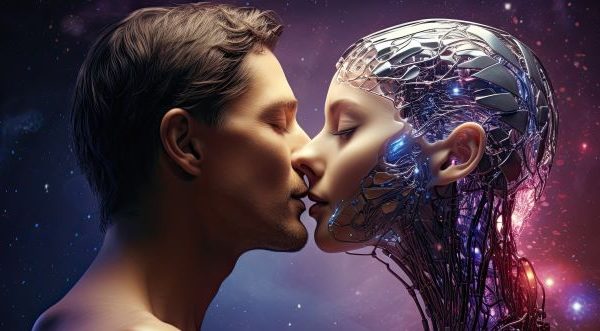In early 2023, digital illustrator Maya Chen made a decision that would change her creative process forever. Instead of fighting against generative AI—as many artists were doing—she decided to collaborate with it. But on her terms.
She trained a custom AI model only on her own past artwork. She built safeguards to prevent misuse. She watermarked every output. And she used the system not to replace her hand, but to explore new visual directions—like how her signature fox character might look in cyberpunk Tokyo, or wearing traditional Miao embroidery reimagined through a sci-fi lens.
Maya’s work went viral—not because it was “AI art,” but because it was human art, amplified.
Her story is part of a quiet revolution happening across creative communities: artists, designers, and storytellers are taking back control of generative AI—not to undress strangers, but to dress their dreams in color, form, and meaning.
And in doing so, they’re offering a powerful alternative to the darker corners of the AI landscape—places where searches for deepnude free once flourished, but where creativity was never the goal.
The Turning Point: From Exploitation to Empowerment
The early days of generative AI were messy. Models trained on billions of images—scraped without consent—could replicate artists’ styles, generate fake nudes, or produce harmful stereotypes. Trust eroded. Lawsuits followed. Many creators felt violated.
But from that crisis emerged a new ethic: if AI learns from us, it should serve us—with permission.
Today, a growing number of artists are building personal, ethical AI workflows:
- Training models only on their own datasets
- Using tools like Glaze or PhotoGuard to protect their style from unauthorized scraping
- Publishing clear licenses for how their AI-assisted work can be used
This isn’t anti-AI. It’s pro-artist.
The Furry Community: Identity, Consent, and Co-Creation
Nowhere is this shift clearer than in the furry fandom—a global community of creators who design anthropomorphic characters (fursonas) as extensions of identity, gender, and emotion.
For years, furries have built intricate worlds through art, writing, and costume. When AI tools appeared, some feared the worst: mass replication of their unique characters, often for explicit content, without consent.
But instead of retreating, many leaned in—on their own terms.
Artist collective NeonPaw Studio now uses AI to:
- Rapidly prototype costume designs for fursuits
- Generate background environments for character comics
- Visualize how a character might age or evolve over time
Crucially, all models are trained on in-house art. No public scraping. No external datasets. And every character is owned by its creator—protected by community norms and emerging digital rights.
“It’s not about replacing the artist,” says Leo, a member of the collective. “It’s about giving us more time to focus on what matters: storytelling, emotion, connection.”
Fashion Without Exploitation: AI as a Design Partner
In the fashion world, AI is helping designers reduce waste, celebrate diversity, and reimagine inclusivity—without using real people as test dummies.
Startups like ReDress AI (note: fictional name for illustration) use generative models to:
- Simulate how fabrics drape on diverse body types—not just standard mannequins
- Create virtual try-ons that respect privacy (no real photos required)
- Generate pattern variations in seconds, cutting down on physical samples
The key? These systems are trained on synthetic or licensed data, not scraped Instagram photos. Consent is built into the pipeline—from dataset to output.
“AI shouldn’t undress people,” says designer Amira Khalid. “It should help us dress the world better.”
The Rise of “Ethical by Design” Tools
Thankfully, the ecosystem is evolving.
New platforms like Kiri.Art, Playground AI, and Adobe Firefly now offer:
- Commercially safe image generation (trained on licensed or public-domain content)
- Style mimicry only with permission
- Built-in opt-out systems for artists
Adobe even lets creators add “Do Not Train” tags to their work via the Content Credentials system—so their art won’t end up in datasets they didn’t approve.
These aren’t perfect solutions. But they’re moving in the right direction: technology that respects authorship, identity, and choice.
Why the Old Model Failed—and What’s Replacing It
The appeal of tools promising “deepnude free” access wasn’t really about technology. It was about power without responsibility—the illusion that you could manipulate someone’s image without consequence.
But real creativity doesn’t work that way.
True art requires engagement, empathy, and ethics. It asks: Who am I representing? Do they consent? What world am I building?
The artists leading today’s AI renaissance understand this. They’re not just making images—they’re modeling a better digital culture.
Practical Steps for Ethical AI Creation
If you’re a creator wanting to use AI responsibly, here’s how:
- Train only on your own work (or licensed content).
- Never generate images of real people without explicit consent.
- Use protective tools like Glaze (glaze.cs.uchicago.edu) to shield your style.
- Credit your process—say when and how AI was used.
- Support platforms that prioritize consent and copyright.
This isn’t restrictive—it’s liberating. Because when you create ethically, you create freely.
The Future Is Collaborative
Generative AI won’t replace artists. But artists who use AI ethically, thoughtfully, and humanely will shape the future.
They’re proving that technology doesn’t have to strip us bare—it can help us dress our ideas in new forms, explore identities safely, and build worlds where everyone’s consent matters.
And in that future, there’s no place for tools that turn people into prompts.
Instead, there’s space for stories like Maya’s—where AI isn’t a weapon, but a witness to human imagination.
Final Thought
The next time you hear someone searching for deepnude free, remember: that’s not the future of AI.
The future is an artist training a model on their own sketches.
A designer simulating inclusive fashion without real bodies.
A furry creator evolving their fursona across lifetimes—all with a click, but also with care.
Because the most powerful thing AI can generate isn’t a fake image.
It’s a better way to create together.



